● About PDI interferometry...
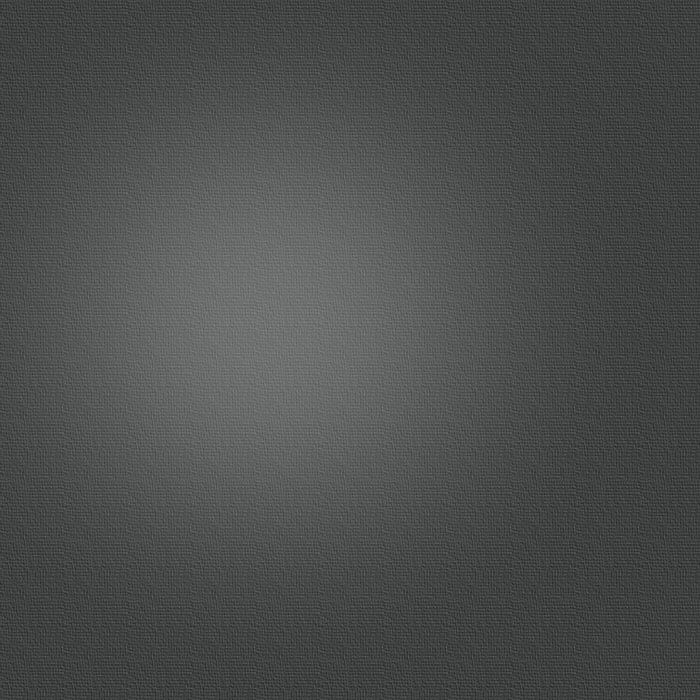
Diffraction wave from a tiny hole or apex of single mode optical fiber propagates as a divergent spherical wave having accuracy of sub-nanometer scale. Referring to this spherical wave, we will construct a novel interferometer and measure surface figure error of many kinds of mirrors.


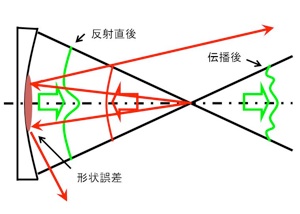
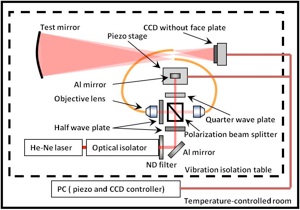
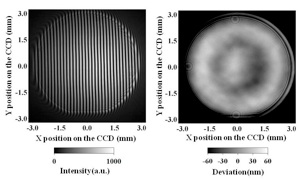
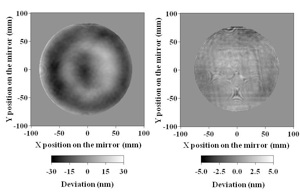
Diagnostic diffraction wave come out from first optical fiber reflect from test mirror and propagates along red arrow. This wave has information of test mirror surface and interference with reference wave from second optical fiber. Resultant interferogram will give us distortion of test mirror surface from ideal sphere.
Diagnostic wave propagates with information of test mirror surface. Therefore the wavefront is changing itself as it propagates after reflection. When the diagnostic wave interference with reference wave, resultant interferogram does not reflect information of test mirror surface anymore. Then we have to reconstruct wave front at test mirror surface by digital holography based on Helmholtz-Kirchhoff integral theorem.
Here is schematic diagram of phase-shifting PDI interferometer. Whole system is installed on vibration isolation table in temperature-controlled room. Laser beam is divided into two beams by polarization beam splitter, and one beam is introduced to optical fiber core directly. Another beam reflects from aluminum mirror on PZT stage, and its optical phase is shifted before being introduced to fiber core.
One of the PDI results are shown in this figure. Test concave mirror is 200 mm diameter and 1500 mm ROC, and its surface accuracy is λ/6.Left-hand side is typical interferogram, and right-hand side is the result of phase-shift analysis with left-hand side data. The distortion numbers are shift length from ideal spherical surface.
On the other hand, left-hand side is the reconstructed wave front just after reflection. Right-hand side shows measurement reproducibility or difference between first result at 0 deg. rotation and second result at 90 deg. rotation. Estimated measurement accuracy for concave mirrors are PV 2.0 nm and RMS 0.85 nm. Aspherical mirrors close to spherical are also measured, and the results have given us almost same measurement accuracy. In the near future, we will try to measure (1) flat mirrors and (2) parabolic mirrors.
